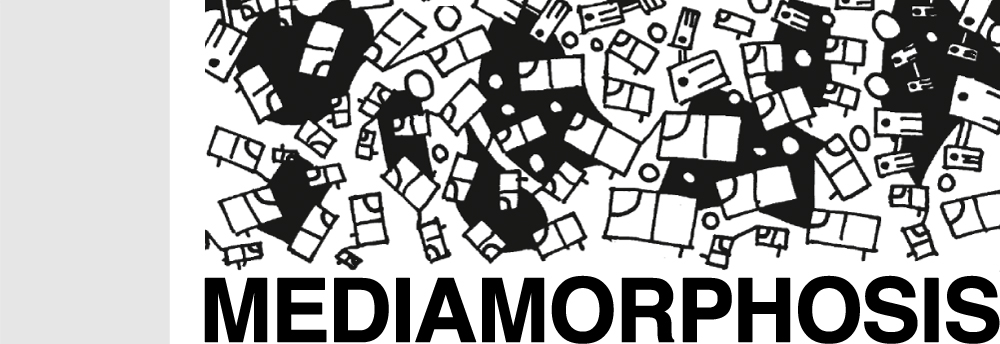KEYNOTE SPEAKER
// Prof Sally Jane Norman_
Director of the Attenborough Centre for the Creative Arts
// “Authentic Experience” in an Authentically Hybrid World
PANEL_1
// Expanded Animation in Public Spaces_chaired by Ian Grant_
The panel collects three speakers, Birgitta Hosea, Joe Stephenson and James Stevenson, all of whom have a relationship to animation, objects and the museum. The presentations will introduce work, research and projects where animation, 3D scanning, interactives and performance have a bearing on (re)mediating artefacts, aiding their interpretation and enlivening their contexts.
The panel will approach what may be consider as authentic kinetic object as it becomes digitally mediated, and interacted with, it will consider live performance and exhibits; digital artefacts; interaction and animation in public space; media archeology.
// Speakers_
Dr Birgitta Hosea_Joe Stephenson__James Stevenson_
PANEL_2
// Listening to the Body: from spectacle to experience
New strategies for bio-sensors in performance today_chaired by Kate Genevieve_
There is a renaissance of interest in the use of bio-sensing technologies in performances and art works. This panel will discuss whether the use of interfaces that output data from brainwaves, heart rate, Galvanic Skin Response, and muscle activity within art and performance contexts is presenting the human body with a different emphasis from the bio-sensor experiments of the 90s. Rather than use these technologies to create bombastic spectacles of the body transformed through technology, we will explore contemporary performances that attempt to bring the hidden signals of the body to the surface. Through discussing projects created by panel members we will explore how bio tools provide new strategies for communicating sensory experience and exploring subtle bodily impulses through performance work.
This panel will bring together speakers who are practicing artists and researchers in this field to explore questions that arise from working with these technologies, questions such as; How might Open-Sourcing biosensor technologies play an important part in the development of these tools and bio-sensing performance culture? How as practitioners do we assess the efficacy of the tools we are using, both in development and through feedback after a performance? How do we balance garnering information about interior states from technology whilst working with our senses directly? What role does visualising and sonifiying bodily signals have in defining how authentic our mediated experiences are?
// Speakers_
Dr Camille Baker_Dr Gascia Ouzounian_
PANEL_3
// Screen Culture & Authentic Experience_chaired by Cécile Chevalier_
Since 1970s, the relationship between media and human reactions has been a leading research topic among media psychologists. This interest has resulted with the development of psychophysiological measures such as the amplitude of the pulse volume or the heart rate as indicators of emotional aspects of media reception (Sturm & Vitouch, 1982). Researches indicated that, the emotions that develop during media reception do not differ fundamentally from everyday situations not influenced by media (Scherer, 1998). Even though what human see on screens is untouchable, virtual and mostly fictional, the influence that it has on audience is real. The audience assign meanings to what is presented on screen in order to appraise the media content. Accordingly, media can be seen as a facilitator to awake and even manipulate human feelings that are originated from people’s judgemental thoughts and experiences.
Moving from this point, in our talk, we will be questioning the authenticity of screen images concerning human reactions who are exposed to different types of media particularly on screen. The audience’s experience will be analysed considering how they interact with changing contents.
The panel will address questions on how the digital screen impact on the senses and therefore emotions? How do the visual experiences of war in the new media offer a quasi-authentic experience to the audience enabling them to pull the triggers in extraterritorialities? How does the representation of ‘authentic’ experiences changes the role of the audience/user?
//Speakers_
Evren Eken_Daniel Alexander Hignell_ Aysenur Karabulut_
PANEL_4
// Authenticity in Stupidity_chaired by Mocksim_
“It no longer makes sense to think in medium-specific terms”, not necessarily because “digital media incorporate all previous media” as Henry Jenkins suggests, but because understanding of what there is and how knowledge is arranged (the ontology and epistemology) has been transformed thanks to new technologies and the network. Hito Steyerl amongst others points to the links which still exist with materiality and the authentic (see http://youtu.be/shszTJ98NZo for example). If relationships with the material and between individuals have been altered due to the new media (and social networking in particular) then authenticity is perhaps revealed through the glitches, through intentional mockery or misuse of these new systems, hidden codes and artificial intelligence.
Micheál O’Connell/Mocksim’s artistic practice deliberately seeks to engage with error, the faults, digital and otherwise, including what is comedic. His research at Sussex is centering around the concept of Artificial Stupidity (as opposed to Artificial Intelligence). The suggestion is that the fractures in systems, in behaviour, the failures are not only reassuring but loaded too in terms of meaning. Marlene Haring’s activity, which purposely messes with the everyday processes people participate in, raises alarm bells about human intimacy. She is concerned with real social networking and the corporeal in a world seemingly obsessed with the on-line variety. For years Simon Morse has investigated the notations and signalling embedded but often unnoticed as part of the corporate and contemporary industrial/consumerist backdrop. He mocks these obscure and apparently functional languages through re-appropriation treating them as forms of amusement or decoration.
The panel will consider whether authenticity is revealed through such play, either by consciously seeking out what’s wrong and (re)presenting it or actually creating problems and so generating critique.
// Speakers_
Marlene Haring_Simon Morse_
PLENARY_
//Chaired by Kirk Woolford_

 RSS - Posts
RSS - Posts